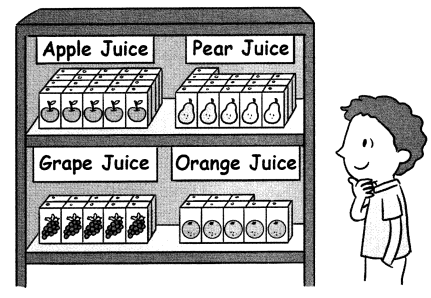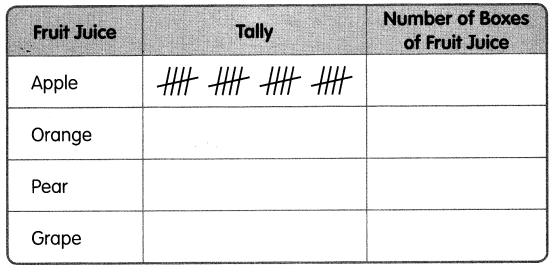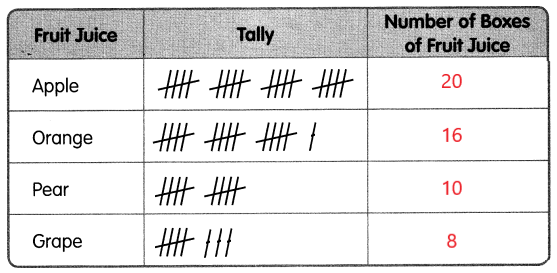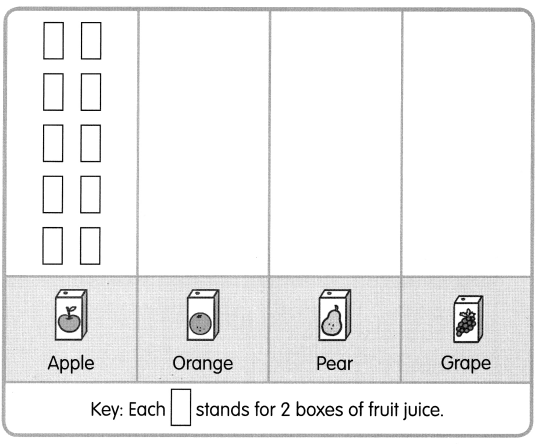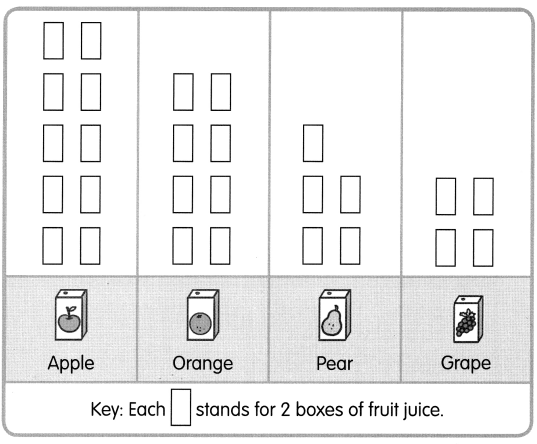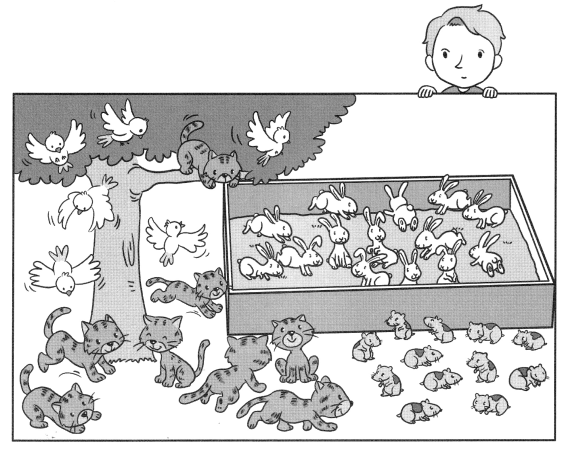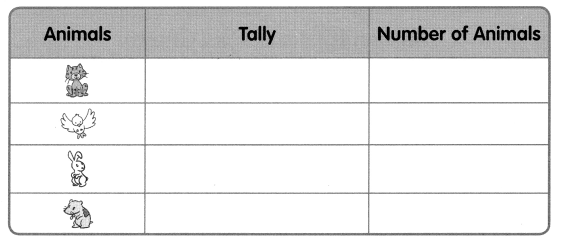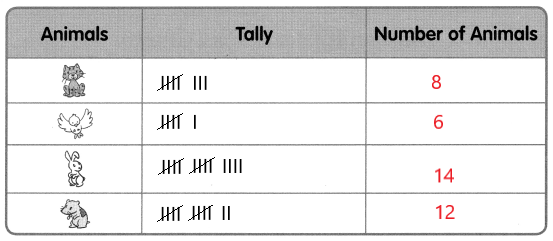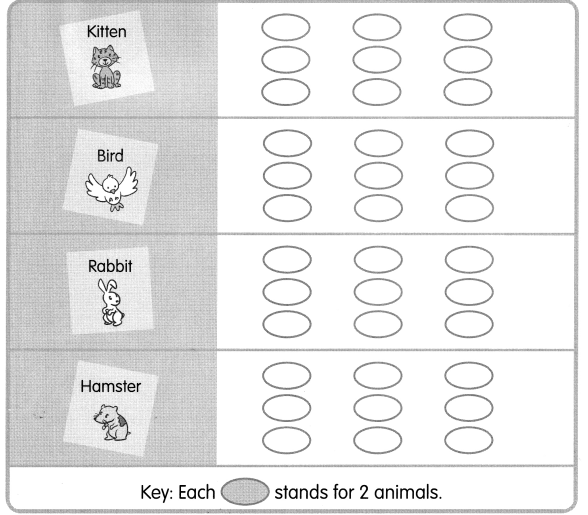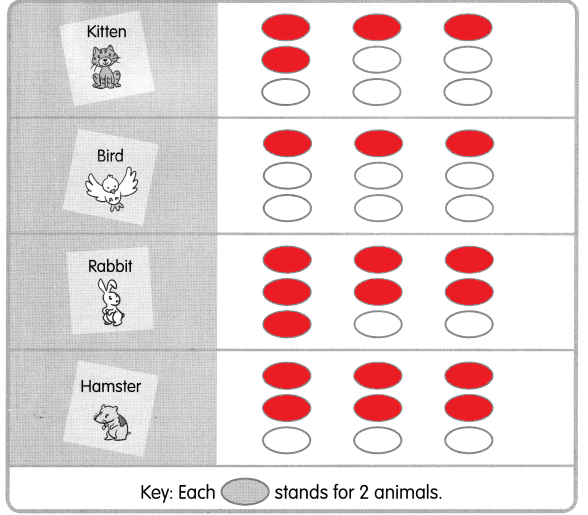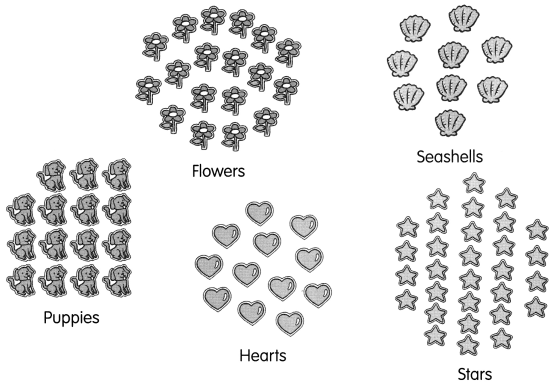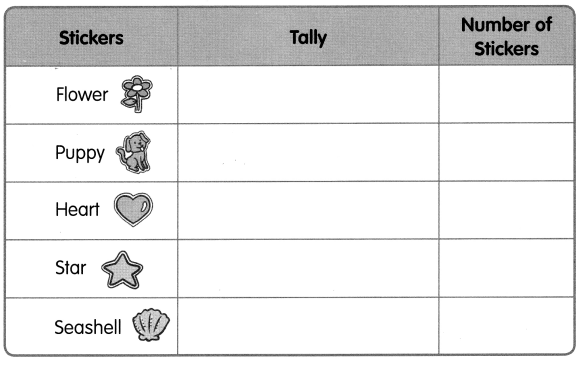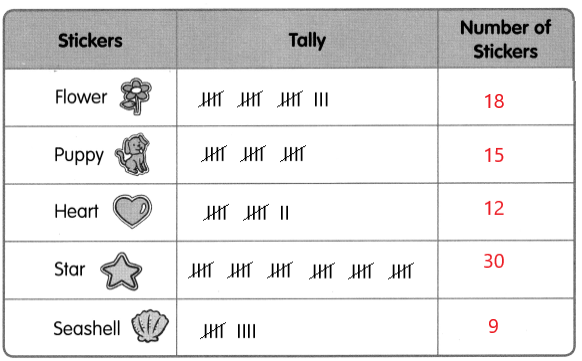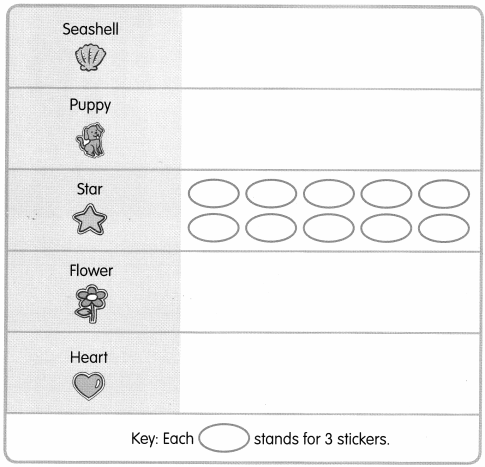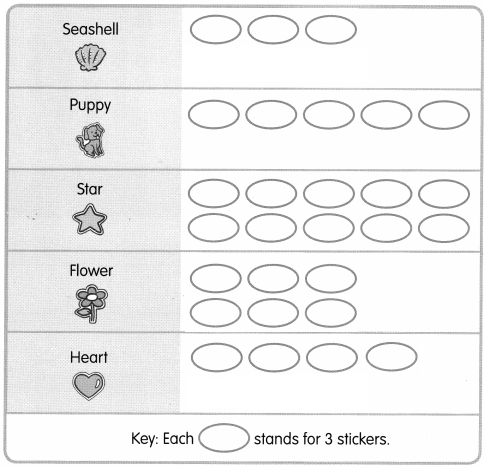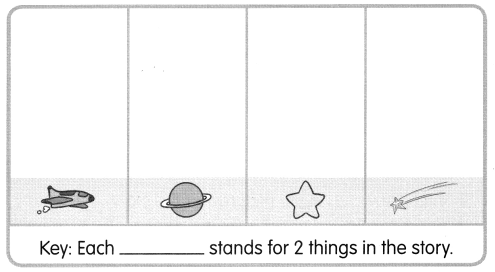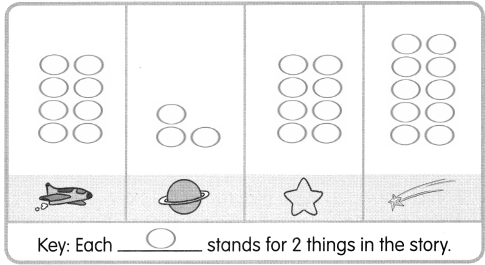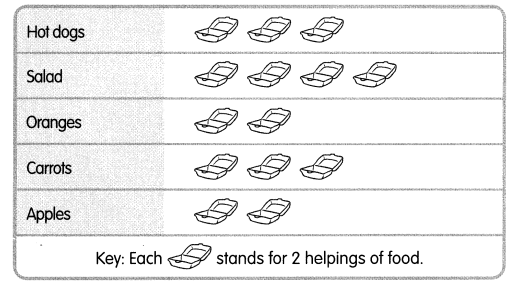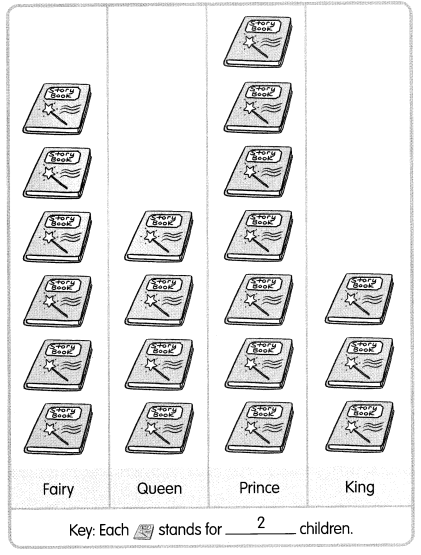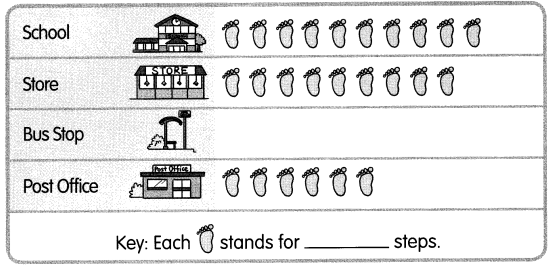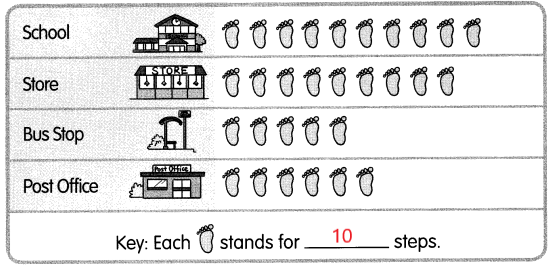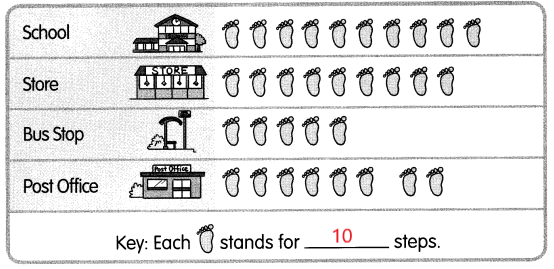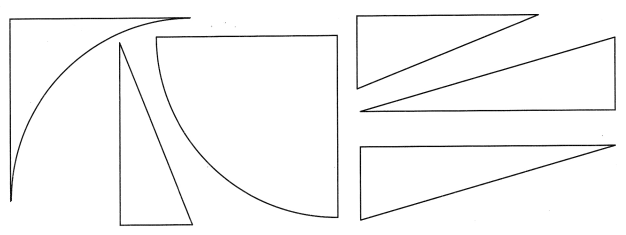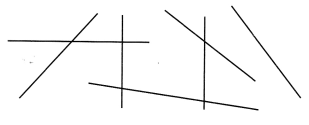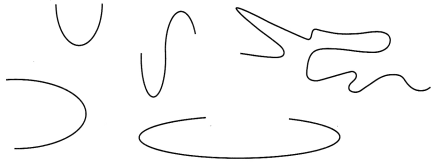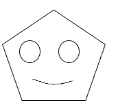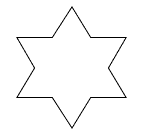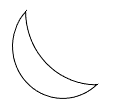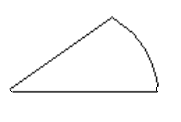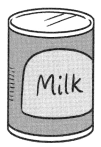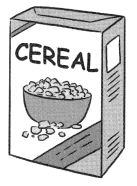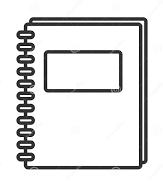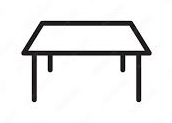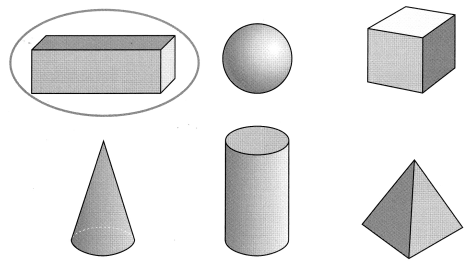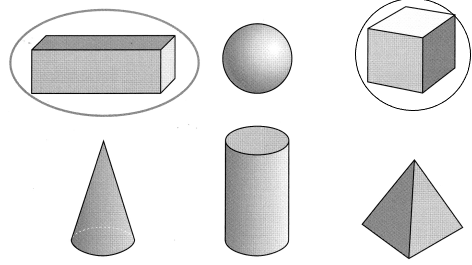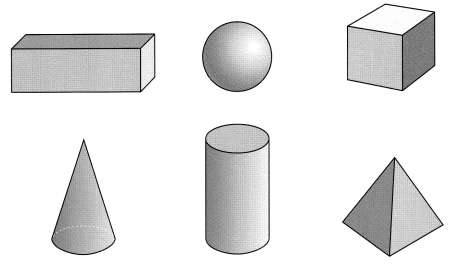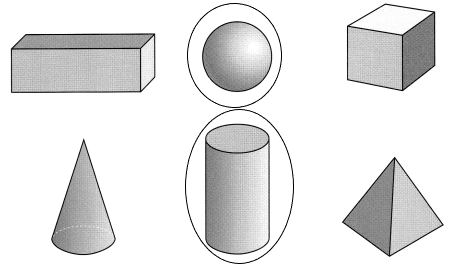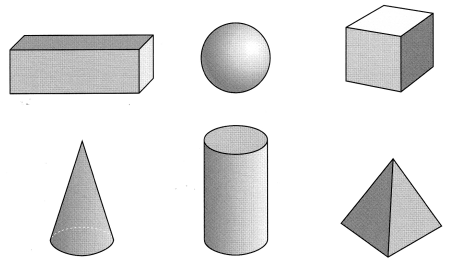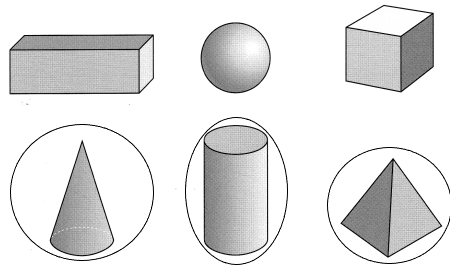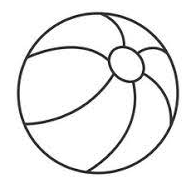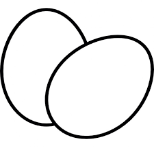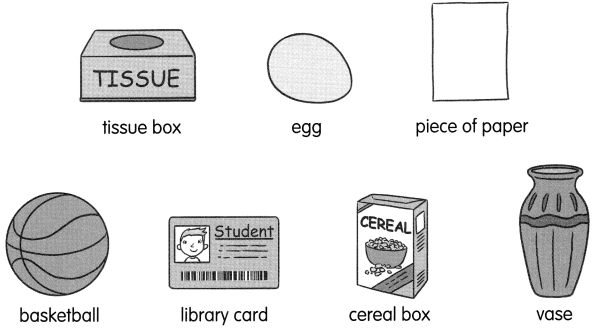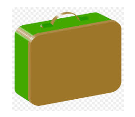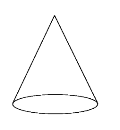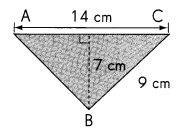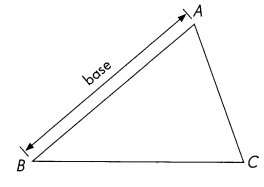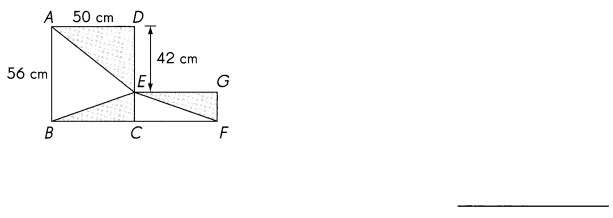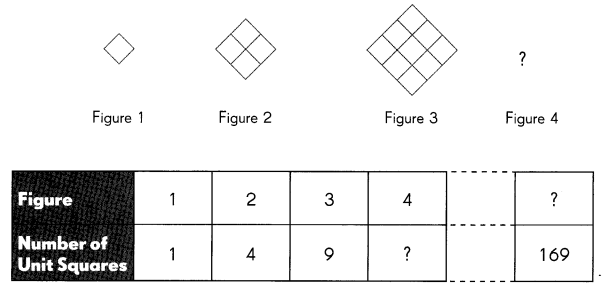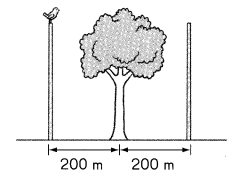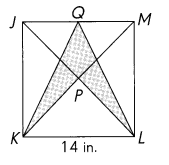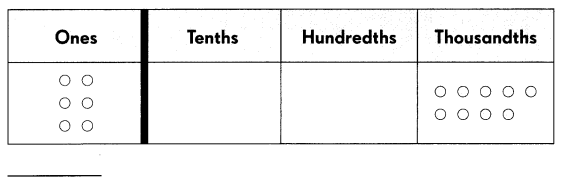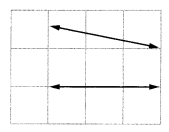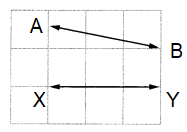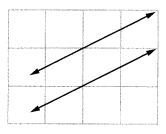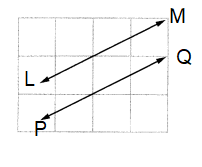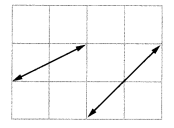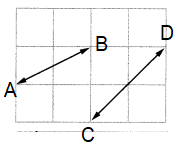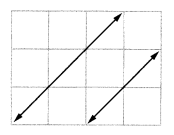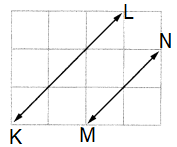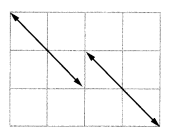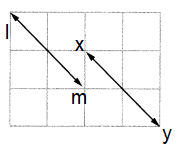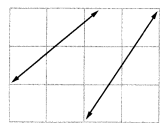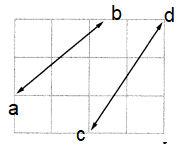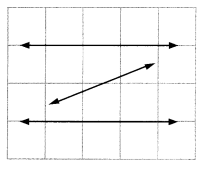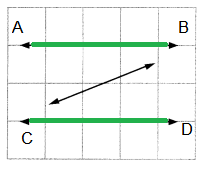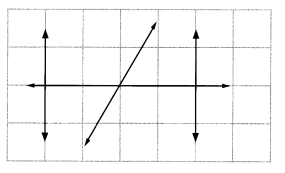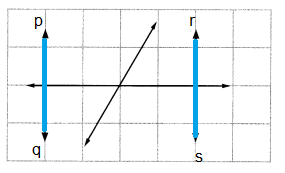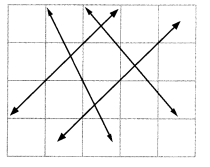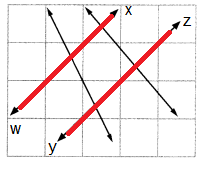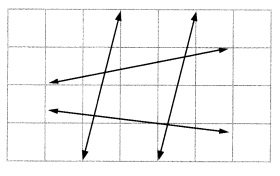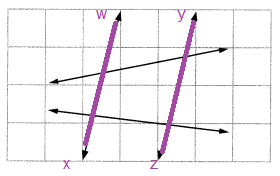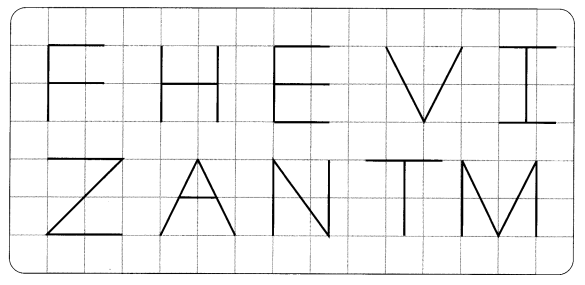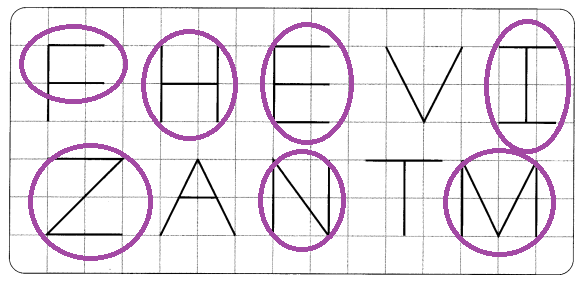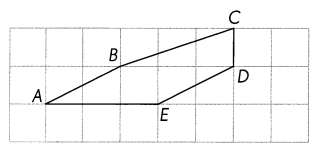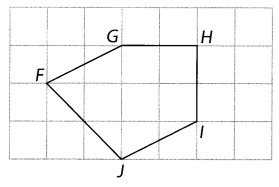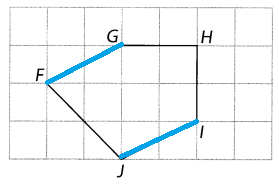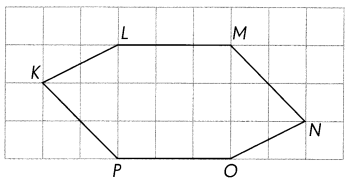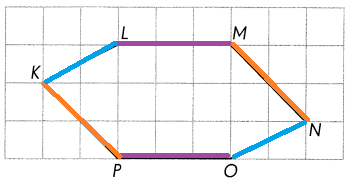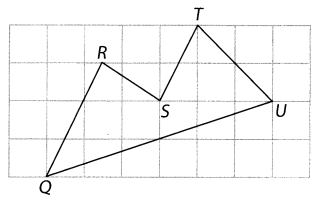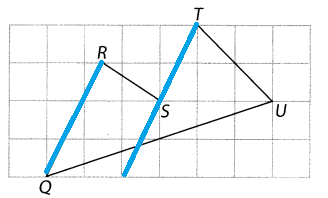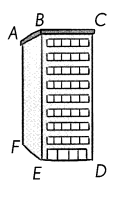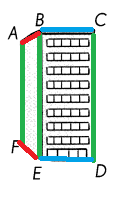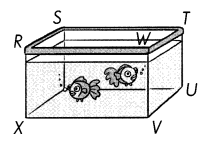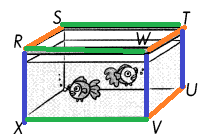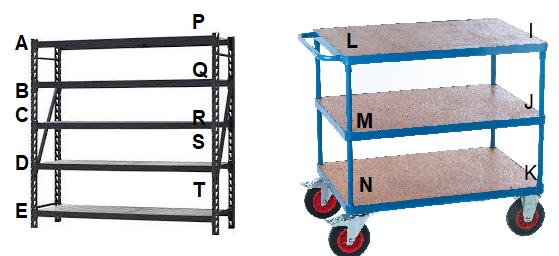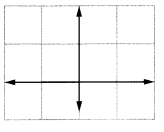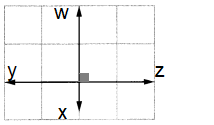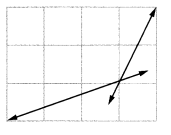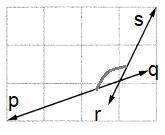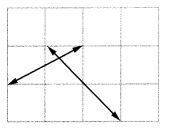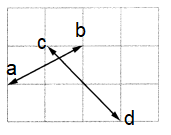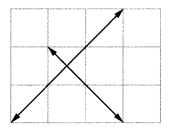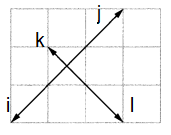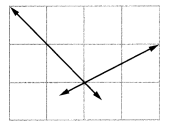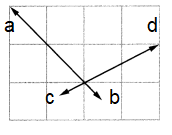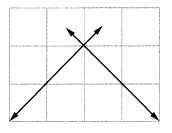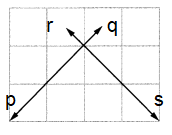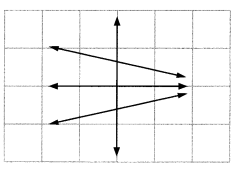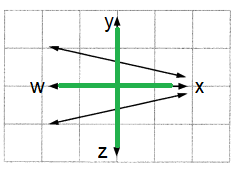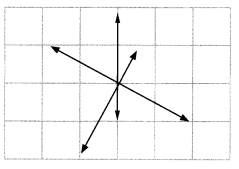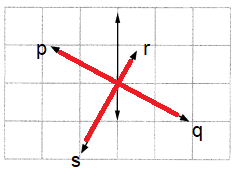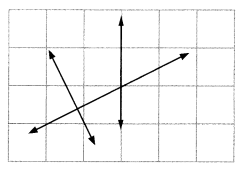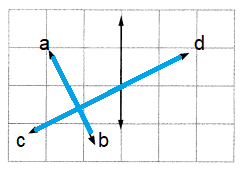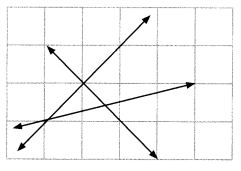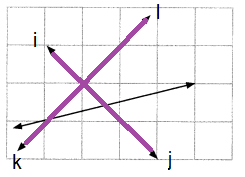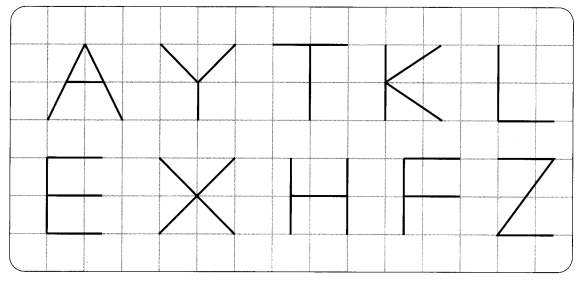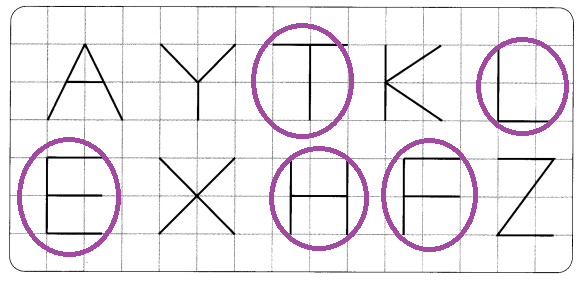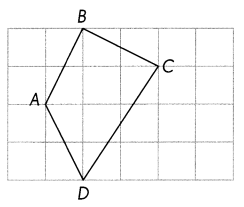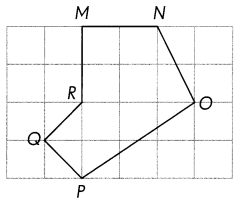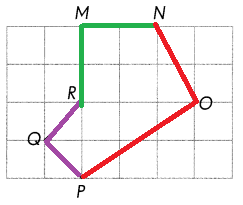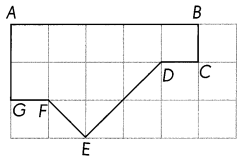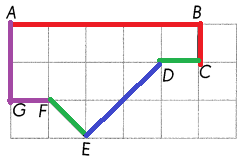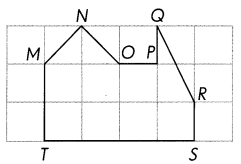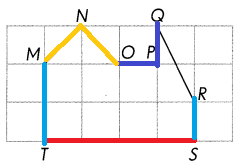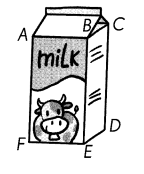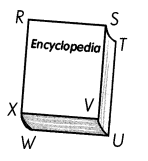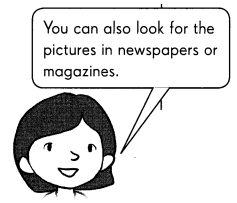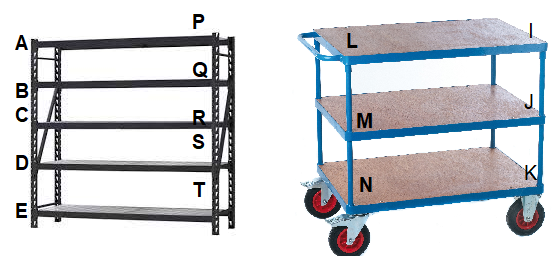Go through the Math in Focus Grade 5 Workbook Answer Key Chapter 2 Practice 7 Order of Operations to finish your assignments.
Math in Focus Grade 5 Chapter 2 Practice 7 Answer Key Order of Operations
Simplify. Record each step.
Example
18 — 11 — 4 = 3
Step 1: 18 – 11 = 7
Step 2: 7 – 4 = 3
Answer:
3,
Explanation:
The order of operation in math is a set of rules revolving around 4 major operators.
According to the order of operations, there is a particular sequence which we need to follow,
on each operator while solving the given mathematical expression we apply DMAS rule.
DMAS is the elementary rule for the order of operation of the Binary operations.
This States that Division will be done before Multiplication,
multiplication before addition and addition before subtraction.
Step 1: 18 – 11 = 7,
Step 2 : 7 – 4 =3.
Question 1.
26 + 8 – 19 = __15__
Step 1 ______
Step 2 ______
Answer:
15,
Explanation:
The order of operation in math is a set of rules revolving around 4 major operators.
According to the order of operations, there is a particular sequence which we need to follow,
on each operator while solving the given mathematical expression we apply DMAS rule.
DMAS is the elementary rule for the order of operation of the Binary operations.
This States that Division will be done before Multiplication,
multiplication before addition and addition before subtraction.
Step 1 : 26 + 8 = 34,
Step 2 : 34 – 19 = 15.
Question 2.
12 + 16 – 9 + 3 = _22__
Step 1 ___
Step 2 ___
Step 3 ____
Answer:
22,
Explanation:
The order of operation in math is a set of rules revolving around 4 major operators.
According to the order of operations, there is a particular sequence which we need to follow,
on each operator while solving the given mathematical expression we apply DMAS rule.
DMAS is the elementary rule for the order of operation of the Binary operations.
This States that Division will be done before Multiplication,
multiplication before addition and addition before subtraction.
Step 1: 12 + 16 = 28,
Step 2 : 28 + 3 = 31,
Step 3 : 31 – 9 = 22.
Question 3.
58 – 23 + 11 – 6 = _40__
Step 1 ___
Step 2 ___
Step 3 ____
Answer:
40,
Explanation:
The order of operation in math is a set of rules revolving around 4 major operators.
According to the order of operations, there is a particular sequence which we need to follow,
on each operator while solving the given mathematical expression we apply DMAS rule.
DMAS is the elementary rule for the order of operation of the Binary operations.
This States that Division will be done before Multiplication,
multiplication before addition and addition before subtraction.
Step 1: 58 + 11 = 69,
Step 2: 69 – 23 = 46,
Step 3: 46 – 6 = 40.
Simplify. State the order in which you performed the operations.
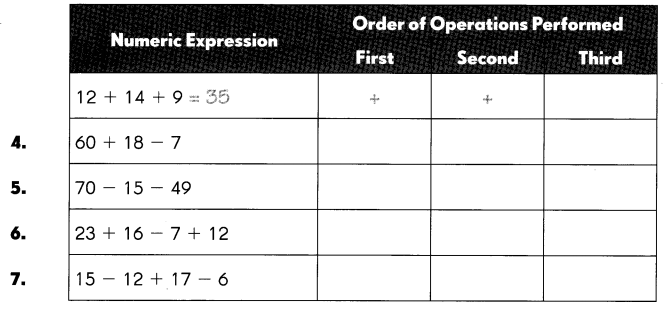
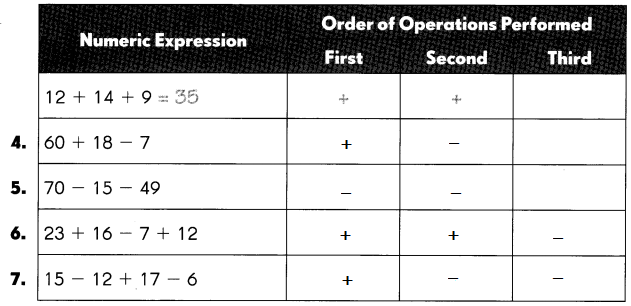
Question 4.
60 + 18 – 7
Answer:
71,
Explanation:
The order of operation in math is a set of rules revolving around 4 major operators.
According to the order of operations, there is a particular sequence which we need to follow,
on each operator while solving the given mathematical expression we apply DMAS rule.
DMAS is the elementary rule for the order of operation of the Binary operations.
This States that Division will be done before Multiplication,
multiplication before addition and addition before subtraction.
Step 1: 60 + 18 = 78,
Step 2: 78 – 7 = 71.
Question 5.
70 – 15 – 49 = 6
Answer:
6,
Explanation:
The order of operation in math is a set of rules revolving around 4 major operators.
According to the order of operations, there is a particular sequence which we need to follow,
on each operator while solving the given mathematical expression we apply DMAS rule.
DMAS is the elementary rule for the order of operation of the Binary operations.
This States that Division will be done before Multiplication,
multiplication before addition and addition before subtraction.
Step 1: 70 – 49 = 21,
Step 2: 21 – 15 = 6.
Question 6.
23 + 16 – 7 + 12
Answer:
44,
Explanation:
The order of operation in math is a set of rules revolving around 4 major operators.
According to the order of operations, there is a particular sequence which we need to follow,
on each operator while solving the given mathematical expression we apply DMAS rule.
DMAS is the elementary rule for the order of operation of the Binary operations.
This States that Division will be done before Multiplication,
multiplication before addition and addition before subtraction.
Step 1: 23 + 16 = 39,
Step 2: 39 + 12 = 51,
Step 3: 51 – 7 = 44.
Question 7.
15 – 12 + 17 – 6
Answer:
14,
Explanation:
The order of operation in math is a set of rules revolving around 4 major operators.
According to the order of operations, there is a particular sequence which we need to follow,
on each operator while solving the given mathematical expression we apply DMAS rule.
DMAS is the elementary rule for the order of operation of the Binary operations.
This States that Division will be done before Multiplication,
multiplication before addition and addition before subtraction.
Step 1: 15 + 17 = 32,
Step 2: 32 – 12 = 20,
Step 3: 20 – 6 = 14.
Simplify. Record each step.
Example
9 × 6 ÷ 2 = 27
Step 1: 9 × 6 = 54
Step 2: 54 ÷ 2 = 27
Question 9.
200 ÷ 10 × 3 ÷ 5 = _12__
Step 1 _________
Step 2 _________
Step 3 _________
Answer:
12,
Explanation:
According to the order of operations, there is a particular sequence which we need to follow,
on each operator while solving the given mathematical expression we apply DMAS rule.
DMAS is the elementary rule for the order of operation of the Binary operations.
This States that Division will be done before Multiplication,
multiplication before addition and addition before subtraction.
Step 1: 200 ÷ 10 = 20,
Step 2: 20 ÷ 5 = 4,
Step 3: 4 x 3 = 12.
Question 10.
250 ÷ 5 ÷ 10 × 2 = _10__
Step 1 _________
Step 2 _________
Step 3 _________
Answer:
10,
Explanation:
According to the order of operations, there is a particular sequence which we need to follow,
on each operator while solving the given mathematical expression we apply DMAS rule.
DMAS is the elementary rule for the order of operation of the Binary operations.
This States that Division will be done before Multiplication,
multiplication before addition and addition before subtraction.
Step 1: 250 ÷ 10 = 25,
Step 2: 25 ÷ 5 = 5,
Step 3: 5 x 2 = 10.
Simplify. State the order in which you performed the operations.
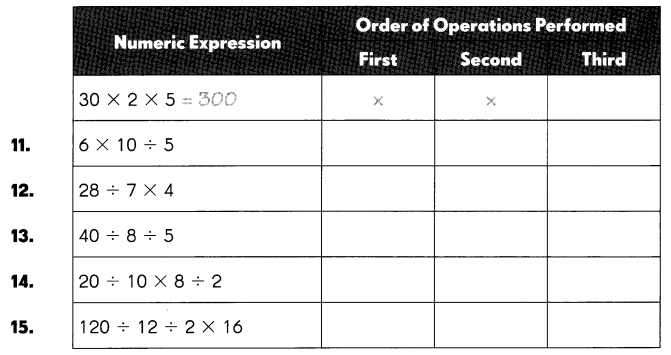
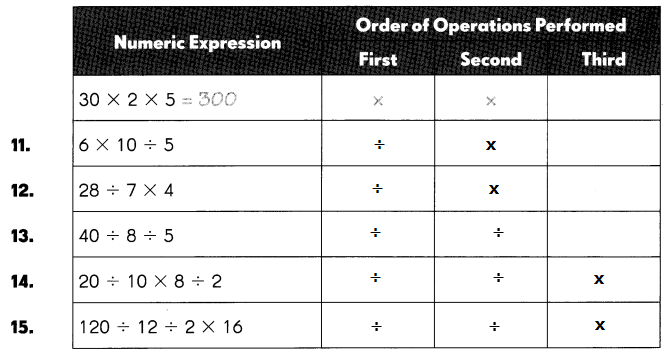
Question 11.
6 × 10 ÷ 5
Answer:
12,
Explanation:
According to the order of operations, there is a particular sequence which we need to follow,
on each operator while solving the given mathematical expression we apply DMAS rule.
DMAS is the elementary rule for the order of operation of the Binary operations.
This States that Division will be done before Multiplication,
multiplication before addition and addition before subtraction.
Step 1: 10 ÷ 5 = 2,
Step 2: 6 x 2 = 12.
Question 12.
28 ÷ 7 × 4
Answer:
16,
Explanation:
According to the order of operations, there is a particular sequence which we need to follow,
on each operator while solving the given mathematical expression we apply DMAS rule.
DMAS is the elementary rule for the order of operation of the Binary operations.
This States that Division will be done before Multiplication,
multiplication before addition and addition before subtraction.
Step 1: 28 ÷ 7 = 4,
Step 2: 4 x 4 = 16.
Question 13.
40 ÷ 8 ÷ 5
Answer:
1,
Explanation:
According to the order of operations, there is a particular sequence which we need to follow,
on each operator while solving the given mathematical expression we apply DMAS rule.
DMAS is the elementary rule for the order of operation of the Binary operations.
This States that Division will be done before Multiplication,
multiplication before addition and addition before subtraction.
Step 1: 40 ÷ 8 = 5,
Step 2: 5 ÷ 5 = 1.
Question 14.
20 ÷ 10 × 8 ÷ 2
Answer:
8,
Explanation:
According to the order of operations, there is a particular sequence which we need to follow,
on each operator while solving the given mathematical expression we apply DMAS rule.
DMAS is the elementary rule for the order of operation of the Binary operations.
This States that Division will be done before Multiplication,
multiplication before addition and addition before subtraction.
Step 1: 20 ÷ 10 = 2,
Step 2: 2 ÷ 2 = 1,
Step 3: 1 x 8 = 8.
Question 15.
120 ÷ 12 ÷ 2 × 16
Answer:
80,
Explanation:
According to the order of operations, there is a particular sequence which we need to follow,
on each operator while solving the given mathematical expression we apply DMAS rule.
DMAS is the elementary rule for the order of operation of the Binary operations.
This States that Division will be done before Multiplication,
multiplication before addition and addition before subtraction.
Step 1:
120 ÷ 12 = 10,
Step 2:
10 ÷ 2 = 5,
Step 3:
16 x 5 = 80.
Simplify. Record each step.
Example
7 × 8 – 6=50
Step 1: 7 × 8 = 56
Step 2: 56 – 6 = 50
Question 16.
14 + 9 × 7 = __77__
Step 1 ___
Step 2 ____
Answer:
77,
Explanation:
According to the order of operations, there is a particular sequence which we need to follow,
on each operator while solving the given mathematical expression we apply DMAS rule.
DMAS is the elementary rule for the order of operation of the Binary operations.
This States that Division will be done before Multiplication,
multiplication before addition and addition before subtraction.
Step 1: 9 x 7 = 63,
Step 2: 63 + 14 = 77.
Question 17.
200 ÷ 20 + 5 = _15__
Step 1 ___
Step 2 ____
Answer:
15,
Explanation:
According to the order of operations, there is a particular sequence which we need to follow,
on each operator while solving the given mathematical expression we apply DMAS rule.
DMAS is the elementary rule for the order of operation of the Binary operations.
This States that Division will be done before Multiplication,
multiplication before addition and addition before subtraction.
Step 1 : 200 ÷ 20 = 10,
Step 2 : 10 + 5 = 15.
Question 18.
80 – 16 ÷ 4 = _76__
Step 1 ___
Step 2 ____
Answer:
76,
Explanation:
According to the order of operations, there is a particular sequence which we need to follow,
on each operator while solving the given mathematical expression we apply DMAS rule.
DMAS is the elementary rule for the order of operation of the Binary operations.
This States that Division will be done before Multiplication,
multiplication before addition and addition before subtraction.
Step 1:
16 ÷ 4 = 4,
Step 2: 80 – 4 = 76.
Simplify. State the order in which you performed the operations.
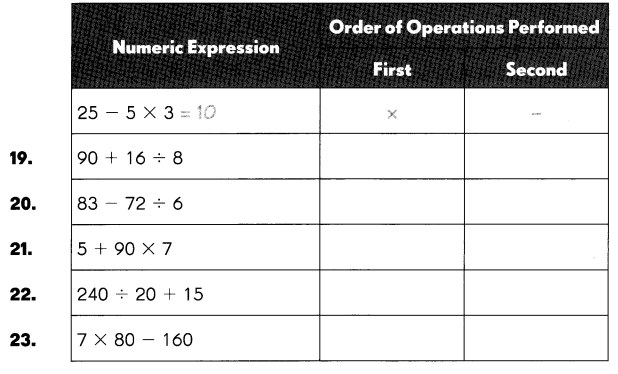
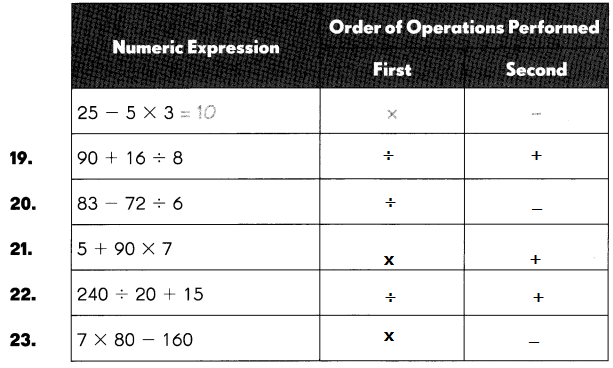
Question 19.
90 + 16 ÷ 8
Answer:
92,
Explanation:
According to the order of operations, there is a particular sequence which we need to follow,
on each operator while solving the given mathematical expression we apply DMAS rule.
DMAS is the elementary rule for the order of operation of the Binary operations.
This States that Division will be done before Multiplication,
multiplication before addition and addition before subtraction.
Step 1: 16 ÷ 8 = 2,
Step 2: 90 + 2 = 92.
Question 20.
83 – 72 ÷ 6
Answer:
71,
Explanation:
According to the order of operations, there is a particular sequence which we need to follow,
on each operator while solving the given mathematical expression we apply DMAS rule.
DMAS is the elementary rule for the order of operation of the Binary operations.
This States that Division will be done before Multiplication,
multiplication before addition and addition before subtraction.
Step 1: 72 ÷ 6 = 12,
Step 2: 83 – 12 = 71.
Question 21.
5 + 90 × 7
Answer:
635,
Explanation:
According to the order of operations, there is a particular sequence which we need to follow,
on each operator while solving the given mathematical expression we apply DMAS rule.
DMAS is the elementary rule for the order of operation of the Binary operations.
This States that Division will be done before Multiplication,
multiplication before addition and addition before subtraction.
Step 1: 90 x 7 = 630,
Step 2: 630 + 5 = 635.
Question 22.
240 ÷ 20 + 15
Answer:
27,
Explanation:
According to the order of operations, there is a particular sequence which we need to follow,
on each operator while solving the given mathematical expression we apply DMAS rule.
DMAS is the elementary rule for the order of operation of the Binary operations.
This States that Division will be done before Multiplication,
multiplication before addition and addition before subtraction.
Step 1: 240 ÷ 20 = 12,
Step 2: 12 + 15 = 27.
Question 23.
7 × 80 – 160
Answer:
400,
Explanation:
According to the order of operations, there is a particular sequence which we need to follow,
on each operator while solving the given mathematical expression we apply DMAS rule.
DMAS is the elementary rule for the order of operation of the Binary operations.
This States that Division will be done before Multiplication,
multiplication before addition and addition before subtraction.
Step 1: 80 x 7 = 560,
Step 2: 560 – 160 = 400.
Simplify. Record each step.
Example
54 ÷ 6 + 20 × 4 = 89
Step 1: 54 ÷ 6 = 9
Step 2: 20 × 4 = 80
Step 3: 9 + 80 = 89
Question 24.
40 – 6 + 10 × 3 = _______
Step 1 __________________
Step 2 ________________
Step 3 _____________
Answer:
64,
Explanation:
According to the order of operations, there is a particular sequence which we need to follow,
on each operator while solving the given mathematical expression we apply DMAS rule.
DMAS is the elementary rule for the order of operation of the Binary operations.
This States that Division will be done before Multiplication,
multiplication before addition and addition before subtraction.
Step 1: 10 x 3 = 30,
Step 2: 30 + 40 = 70,
Step 3: 70 – 6 = 64.
Question 25.
36 ÷ 6 – 25 ÷ 5 = _______
Step 1 ________________
Step 2 ________________
Step 3 ___________________
Answer:
1,
Explanation:
According to the order of operations, there is a particular sequence which we need to follow,
on each operator while solving the given mathematical expression we apply DMAS rule.
DMAS is the elementary rule for the order of operation of the Binary operations.
This States that Division will be done before Multiplication,
multiplication before addition and addition before subtraction.
Step 1: 36 ÷ 6 = 6,
Step 2: 25 ÷ 5 = 5,
Step 3: 6 – 5 = 1.
Question 26.
25 × 4 – 36 ÷ 9 = ___
Step 1 __________
Step 2 __________
Step 3 ________
Answer:
96,
Explanation:
According to the order of operations, there is a particular sequence which we need to follow,
on each operator while solving the given mathematical expression we apply DMAS rule.
DMAS is the elementary rule for the order of operation of the Binary operations.
This States that Division will be done before Multiplication,
multiplication before addition and addition before subtraction.
Step 1: 36 ÷ 9 = 4,
Step 2: 25 x 4 = 100,
Step 3: 100 – 4 = 96.
Simplify. State the order in which you performed the operations.
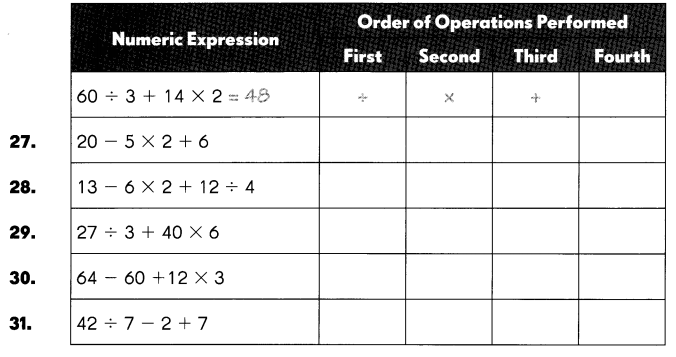
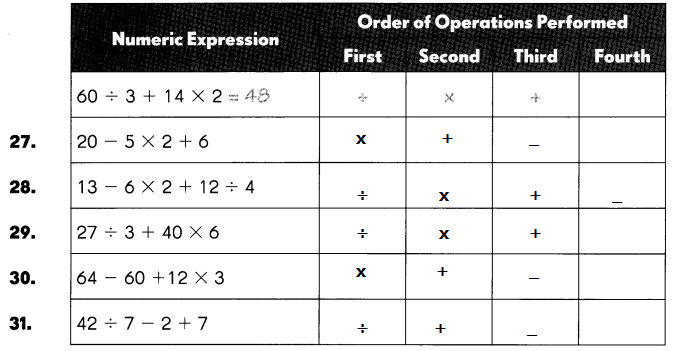
Question 27.
20 – 5 × 2 + 6
Answer:
16,
Explanation:
According to the order of operations, there is a particular sequence which we need to follow,
on each operator while solving the given mathematical expression we apply DMAS rule.
DMAS is the elementary rule for the order of operation of the Binary operations.
This States that Division will be done before Multiplication,
multiplication before addition and addition before subtraction.
Step 1: 5 x 2 = 10,
Step 2: 20 – 10 = 10,
Step 3: 10 + 6 = 16.
Question 28.
13 – 6 × 2 + 12 ÷ 4
Answer:
4,
Explanation:
According to the order of operations, there is a particular sequence which we need to follow,
on each operator while solving the given mathematical expression we apply DMAS rule.
DMAS is the elementary rule for the order of operation of the Binary operations.
This States that Division will be done before Multiplication,
multiplication before addition and addition before subtraction.
Step 1: 12 ÷ 4 = 3,
Step 2: 6 x 2 = 12,
Step 3: 13 – 12 = 1,
Step 4: 3 + 1 = 4.
Question 29.
27 ÷ 3 + 40 × 6
Answer:
249,
Explanation:
According to the order of operations, there is a particular sequence which we need to follow,
on each operator while solving the given mathematical expression we apply DMAS rule.
DMAS is the elementary rule for the order of operation of the Binary operations.
This States that Division will be done before Multiplication,
multiplication before addition and addition before subtraction.
Step 1: 27 ÷ 3 = 9,
Step 2: 40 x 6 = 240,
Step 3: 240 + 9 = 249.
Question 30.
64 – 60 + 12 × 3
Answer:
40,
Explanation:
According to the order of operations, there is a particular sequence which we need to follow,
on each operator while solving the given mathematical expression we apply DMAS rule.
DMAS is the elementary rule for the order of operation of the Binary operations.
This States that Division will be done before Multiplication,
multiplication before addition and addition before subtraction.
Step 1: 12 x 3 = 36,
Step 2: 36 + 64 = 100,
Step 3: 100 – 60 =40.
Question 31.
42 ÷ 7 – 2 + 7
Answer:
11,
Explanation:
According to the order of operations, there is a particular sequence which we need to follow,
on each operator while solving the given mathematical expression we apply DMAS rule.
DMAS is the elementary rule for the order of operation of the Binary operations.
This States that Division will be done before Multiplication,
multiplication before addition and addition before subtraction.
Step 1: 42 ÷ 7 = 6,
Step 2: 6 + 7 = 13,
Step 3: 13 – 2 = 11.
Simplify. Record each step.
Example
(15 – 11) × 9
Step 1: 15 – 11 = 4
Step 2: 4 × 9 = 36
Question 32.
(11 + 5) ÷ 16 = _1__
Step 1 ____
Step 2 ____
Answer:
1,
Explanation:
According to the order of operations, there is a particular sequence which we need to follow,
on each operator while solving the given mathematical expression we use BODMAS rule.
The BODMAS stands for
B – Brackets, O – Order of powers, D – Division, M – Multiplication, A – Addition, and S – Subtraction.
Step 1: 11 + 5 = 16,
Step 2: 16 ÷ 16 = 1.
Simplify. Record each step.
Question 33.
63 – (9 × 7) = _0_
Step 1 ______
Step 2 ________________
Answer:
0,
Explanation:
According to the order of operations, there is a particular sequence which we need to follow,
on each operator while solving the given mathematical expression we apply BODMAS rule.
The acronym stands for
B – Brackets, O – Order of powers, D – Division, M – Multiplication, A – Addition and S – Subtraction.
Step 1: 9 x 7 = 63,
Step 2: 63 – 63 = 0.
Question 34.
32 ÷ (14 + 2) = ____
Step 1 __________________
Step 2 __________________
Answer:
2,
Explanation:
According to the order of operations, there is a particular sequence which we need to follow,
on each operator while solving the given mathematical expression we apply BODMAS rule.
The acronym stands for
B – Brackets, O – Order of powers, D – Division, M – Multiplication, A – Addition and S – Subtraction.
Step 1 : 14 + 2 = 16,
Step 2 : 32 ÷ 16 = 2.
Simplify. State the order in which you performed the operations.
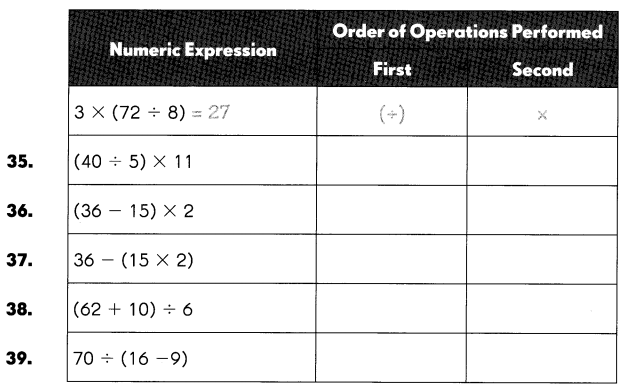
Answer:
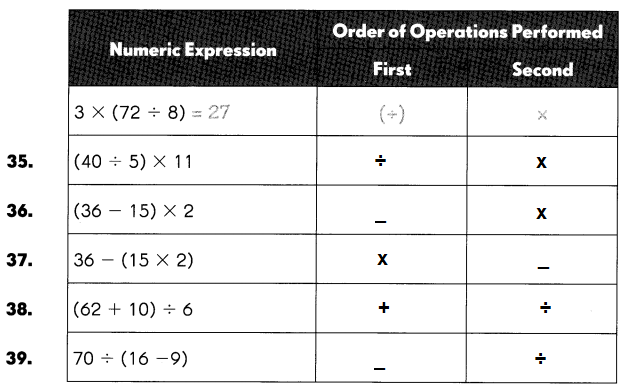
Question 35.
(40 ÷ 5) × 11
Answer:
88,
Explanation:
According to the order of operations, there is a particular sequence which we need to follow,
on each operator while solving the given mathematical expression we apply BODMAS rule.
BODMAS is the elementary rule for the order of operation of the Binary operations.
The acronym stands for B – Brackets, O – Order of powers, D – Division,
M – Multiplication, A – Addition, and S – Subtraction.
Step 1 40 ÷ 5 = 8,
Step 2 8 x 11 = 88.
Question 36.
(36 – 15) × 2
Answer:
42,
Explanation:
According to the order of operations, there is a particular sequence which we need to follow,
on each operator while solving the given mathematical expression we apply BODMAS rule.
BODMAS is the elementary rule for the order of operation of the Binary operations.
The acronym stands for B – Brackets, O – Order of powers, D – Division,
M – Multiplication, A – Addition, and S – Subtraction,
Step 1: 36 – 15 = 21,
Step 2: 21 x 2 = 42.
Question 37.
36 – (15 × 2)
Answer:
6,
Explanation:
According to the order of operations, there is a particular sequence which we need to follow,
on each operator while solving the given mathematical expression we apply BODMAS rule.
BODMAS is the elementary rule for the order of operation of the Binary operations.
The acronym stands for
B – Brackets, O – Order of powers, D – Division, M – Multiplication,
A – Addition, and S – Subtraction.,
Step 1: 15 x 2 = 30,
Step 2: 36 – 30 = 6.
Question 38.
(62 + 10) ÷ 6
Answer:
12,
Explanation:
According to the order of operations, there is a particular sequence which we need to follow,
on each operator while solving the given mathematical expression we apply BODMAS rule.
BODMAS is the elementary rule for the order of operation of the Binary operations.
The acronym stands for
B – Brackets, O – Order of powers, D – Division, M – Multiplication,
A – Addition, and S – Subtraction,
Step 1:
62 + 10 = 72,
Step 2:
72 ÷ 6 =12.
Question 39.
70 ÷ (16 – 9)
Answer:
10,
Explanation:
According to the order of operations, there is a particular sequence which we need to follow,
on each operator while solving the given mathematical expression we apply BODMAS rule.
BODMAS is the elementary rule for the order of operation of the Binary operations.
The acronym stands for B – Brackets, O – Order of powers, D – Division,
M – Multiplication, A – Addition, and S – Subtraction.
Step 1:
16 – 9 = 7,
Step 2 :
70 ÷ 7 = 10.
Simplify. Record each step.
Example
21 + (12 + 6) ÷ 3 = 27
Step 1 12 + 6 = 18
Step 2 18 ÷ 3 = 6
Step 3 21 + 6 = 27
Question 40.
7 + (8 – 4) × 10 = _47___
Step 1 _______________
Step 2 _________
Step 3 ______
Answer:
47,
Explanation:
According to the order of operations, there is a particular sequence which we need to follow,
on each operator while solving the given mathematical expression we apply BODMAS rule.
BODMAS is the elementary rule for the order of operation of the Binary operations.
The acronym stands for B – Brackets, O – Order of powers, D – Division,
M – Multiplication, A – Addition, and S – Subtraction.
Step 1 : 8 – 4 = 4,
Step 2 : 4 x 10 = 40,
Step 3 : 40 + 7 = 47.
Question 41.
32 ÷ (7 + 1) × 9 – 5 = ____
Step 1 _______________
Step 2 _________
Step 3 ______
Step 4 ______
Answer:
31,
Explanation:
According to the order of operations, there is a particular sequence which we need to follow,
on each operator while solving the given mathematical expression we apply BODMAS rule.
BODMAS is the elementary rule for the order of operation of the Binary operations.
The acronym stands for B – Brackets, O – Order of powers, D – Division, M – Multiplication,
A – Addition, and S – Subtraction.
Step 1 : 7 + 1 = 8
Step 2 : 32 ÷ 8 = 4
Step 3 : 4 x 9 = 36
Step 4 : 36 – 5 = 31.
Simplify. Record each step.
Question 42.
(47 + 12) – 10 ÷ 5 × 3 = ___
Step 1 _________________
Step 2 ______________
Step 3 __________________
Step 4 __________________
Answer:
53,
Explanation:
According to the order of operations, there is a particular sequence which we need to follow,
on each operator while solving the given mathematical expression we apply BODMAS rule.
BODMAS is the elementary rule for the order of operation of the Binary operations.
The acronym stands for B – Brackets, O – Order of powers, D – Division,
M – Multiplication, A – Addition, and S – Subtraction.
Step 1: 47 + 12 = 59,
Step 2: 10 ÷ 5 = 2,
Step 3: 2 x 3 =6,
Step 4: 59 – 6 = 53.
Simplify. State the order in which you performed the operations.
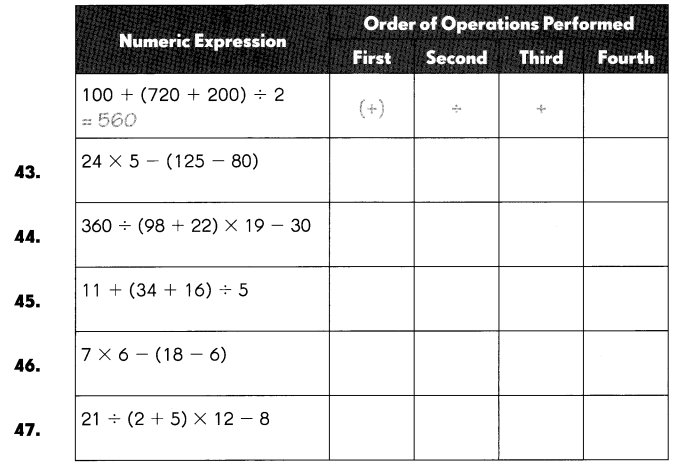
Answer:
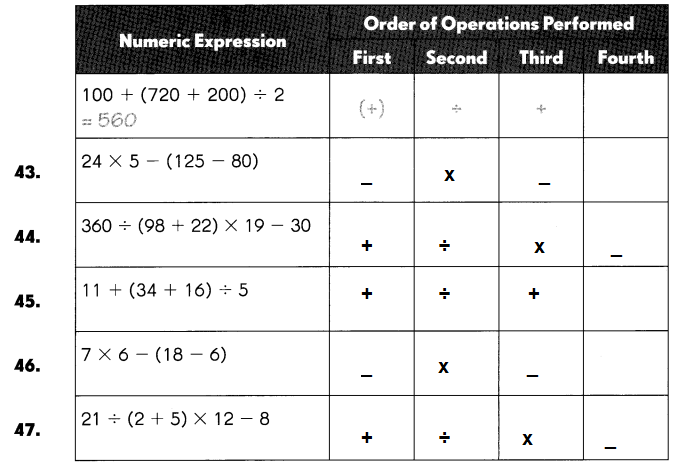
Question 43.
24 × 5 – (125 – 80)
Answer:
75,
Explanation:
According to the order of operations, there is a particular sequence which we need to follow,
on each operator while solving the given mathematical expression we apply BODMAS rule.
BODMAS is the elementary rule for the order of operation of the Binary operations.
The acronym stands for B – Brackets, O – Order of powers,
D – Division, M – Multiplication, A – Addition, and S – Subtraction.
Step 1 : 125 – 80 = 45,
Step 2 : 24 x 5 = 120,
Step 3: 120 – 45 = 75.
Question 44.
360 ÷ (98 + 22) × 19 – 30
Answer:
27,
Explanation:
According to the order of operations, there is a particular sequence which we need to follow,
on each operator while solving the given mathematical expression we apply BODMAS rule.
BODMAS is the elementary rule for the order of operation of the Binary operations.
The acronym stands for B – Brackets, O – Order of powers,
D – Division, M – Multiplication, A – Addition, and S – Subtraction.
Step 1: 98 + 22 = 120,
Step 2: 360 ÷ 120 = 3,
Step 3: 3 x 19 = 57,
Step 4: 57 – 30 = 27.
Question 45.
11 + (34 + 16) ÷ 5
Answer:
21,
Explanation:
According to the order of operations, there is a particular sequence which we need to follow,
on each operator while solving the given mathematical expression we apply BODMAS rule.
BODMAS is the elementary rule for the order of operation of the Binary operations.
The acronym stands for B – Brackets, O – Order of powers, D – Division,
M – Multiplication, A – Addition, and S – Subtraction.
Step 1: 34 + 16 = 50,
Step 2: 50 ÷ 5 = 10,
Step 3: 10 + 11 = 21.
Question 46.
7 × 6 – (18 – 6)
Answer:
30,
Explanation:
According to the order of operations, there is a particular sequence which we need to follow,
on each operator while solving the given mathematical expression we apply BODMAS rule.
BODMAS is the elementary rule for the order of operation of the Binary operations.
The acronym stands for B – Brackets, O – Order of powers, D – Division,
M – Multiplication, A – Addition, and S – Subtraction.
Step 1: 18 – 6 = 12,
Step 2: 7 x 6 = 42,
Step 3: 42 – 12 = 30.
Question 47.
21 ÷ (2 + 5) × 12 – 8
Answer:
28,
Explanation:
According to the order of operations, there is a particular sequence which we need to follow,
on each operator while solving the given mathematical expression we apply BODMAS rule.
BODMAS is the elementary rule for the order of operation of the Binary operations.
The acronym stands for B – Brackets, O – Order of powers, D – Division,
M – Multiplication, A – Addition, and S – Subtraction.
Step 1: 2 + 5 = 7,
Step 2: 21 ÷ 7 = 3,
Step 3: 3 x 12 = 36,
Step 4: 36 – 8 = 28.
Simplify. Record each step.
Example
{50 – [13 – (8 + 3)]} ÷ 4 = 12
Step 1 8 + 3
Step 2 13 – 11 = 2
Step 3 50 – 2 = 48</>
Step 4 48 ÷ 4 = 12
Question 48.
19 – [(18 + 2) – 6]
Step 1 __________________
Step 2 __________________
Step 3 __________________
Answer: 5
Step 1 18 + 2 = 20
Step 2 20 – 6 = 14
Step 3 19 – 14 = 5
Explanation:
According to the order of operations, there is a particular sequence which we need to follow,
on each operator while solving the given mathematical expression we apply BODMAS rule.
BODMAS is the elementary rule for the order of operation of the Binary operations.
The acronym stands for B – Brackets, O – Order of powers, D – Division, M – Multiplication, A – Addition, and S – Subtraction.
Question 49.
[(27 ÷ 9) – 3] + 30 = ___
Step 1 __________________
Step 2 __________________
Step 3 __________________
Answer: 30
Step 1 27 ÷ 9 = 3
Step 2 3 – 3 = 0
Step 3 0 + 30 = 30
Explanation:
According to the order of operations, there is a particular sequence which we need to follow,
on each operator while solving the given mathematical expression we apply BODMAS rule.
BODMAS is the elementary rule for the order of operation of the Binary operations.
The acronym stands for B – Brackets, O – Order of powers, D – Division, M – Multiplication, A – Addition, and S – Subtraction.
Question 50.
11 + {18 – [15 ÷ (20 – 15)]}= ____
Step 1 __________________
Step 2 __________________
Step 3 __________________
Step 4 __________________
Answer: 26
Step 1 20 – 15 = 5
Step 2 15 ÷ 5 = 3
Step 3 18 – 3 = 15
Step 4 11 + 15 = 26
Explanation:
According to the order of operations, there is a particular sequence which we need to follow,
on each operator while solving the given mathematical expression we apply BODMAS rule.
BODMAS is the elementary rule for the order of operation of the Binary operations.
The acronym stands for B – Brackets, O – Order of powers, D – Division, M – Multiplication, A – Addition, and S – Subtraction.
Question 51.
{[(100 ÷ 4) × (3 + 3)] ÷ 50} + 9 =
Step 1 ________________
Step 2 _____________
Step 3 __________________
Step 4 __________________
Step 5 __________________
Answer: 12
Step 1 100 ÷ 4 = 25
Step 2 3 + 3 = 6
Step 3 2 5 x 6 = 150
Step 4 150 ÷ 50 = 3
Step 3 + 9 = 12
Explanation:
According to the order of operations, there is a particular sequence which we need to follow,
on each operator while solving the given mathematical expression we apply BODMAS rule.
BODMAS is the elementary rule for the order of operation of the Binary operations.
The acronym stands for B – Brackets, O – Order of powers, D – Division, M – Multiplication, A – Addition, and S – Subtraction.
Question 52.
(108 – 86) + {120 ÷ [20 – (10 + 6)]} = ___
Step 1 __________________
Step 2 ________________
Step 3 __________________
Step 4 __________________
Step 5 __________________
Answer: 55
Step 1 10 + 6 = 16
Step 2 20 – 16 = 4
Step 3 120 ÷ 4 = 30
Step 4 108 – 86 = 22
Step 5 22 + 30 = 55
Explanation:
According to the order of operations, there is a particular sequence which we need to follow,
on each operator while solving the given mathematical expression we apply BODMAS rule.
BODMAS is the elementary rule for the order of operation of the Binary operations.
The acronym stands for B – Brackets, O – Order of powers, D – Division, M – Multiplication, A – Addition, and S – Subtraction.
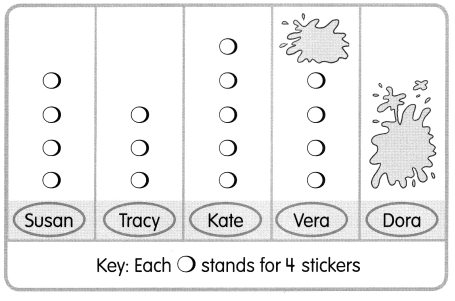
 against Susan
against Susan stands for 4 stickers
stands for 4 stickers stands for 4stickers
stands for 4stickers![]() should there be on the graph?
should there be on the graph? should be on the graph
should be on the graph stands for 2 stickers
stands for 2 stickers on the graph against Dora.
on the graph against Dora.![]() must be on the graph?
must be on the graph? must be on the graph
must be on the graph stands for 2 stickers
stands for 2 stickers
 must be on the graph against vera.
must be on the graph against vera. = 4 x 4 = 16 stickers
= 4 x 4 = 16 stickers = 3 x 4 = 12 stickers
= 3 x 4 = 12 stickers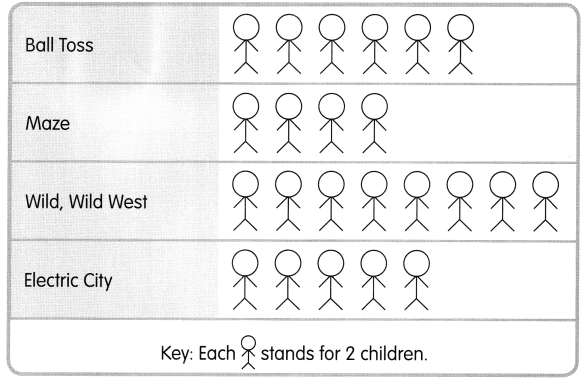
![]() to stand for 4- fish.
to stand for 4- fish.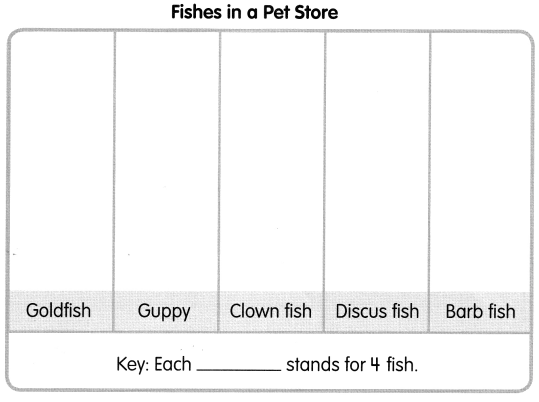
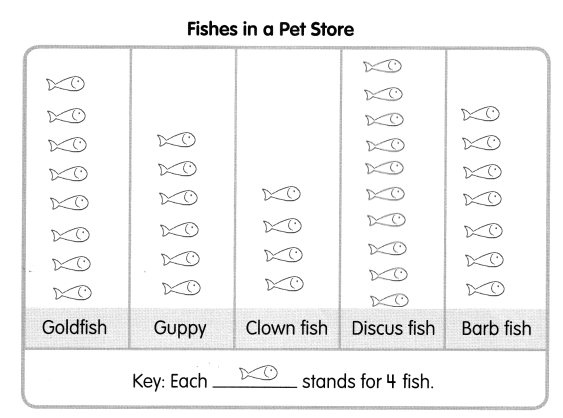
![]() to stand for 2 cups.
to stand for 2 cups.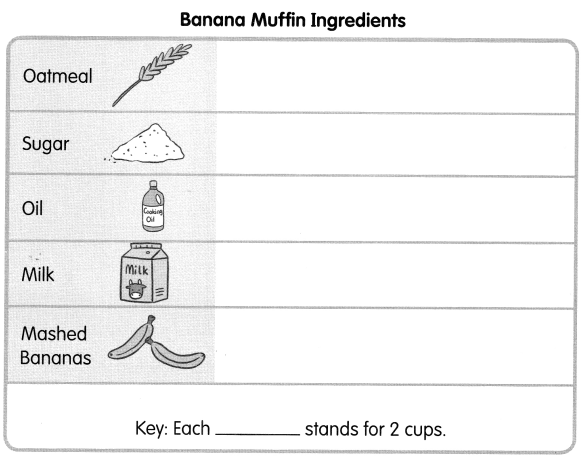
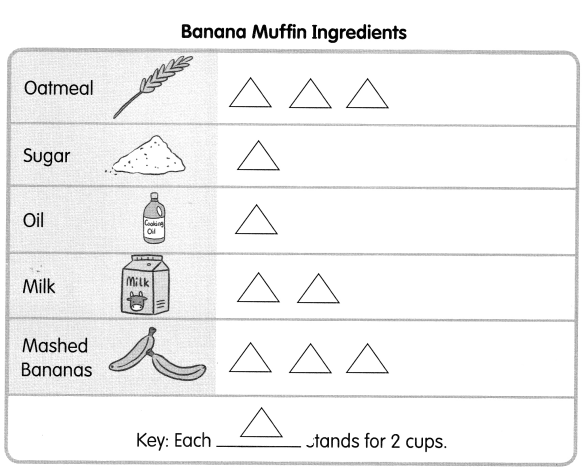
 for sugar as each
for sugar as each  stands for 2 cups
stands for 2 cups for oil too.
for oil too. stands for 2 cups
stands for 2 cups for milk
for milk for oat meal
for oat meal for bananas
for bananas